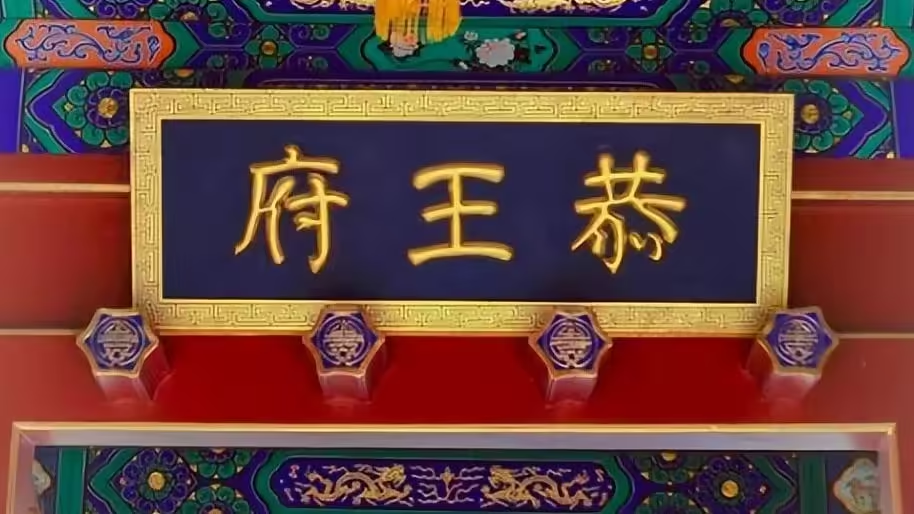Shichahai, an area steeped in history, existed long before Beijing itself. It has been a bustling urban center and a key harbor since the Yuan Dynasty. In the past, Houhai (后海) was lined with teahouses, food stalls, and entertainment venues, attracting officials and locals alike. Today, it remains one of the most vibrant and historically rich areas in Beijing. In spring and summer, Shichahai’s beauty reaches its peak, making it an ideal destination for both locals and tourists. Below is the detailed “Classic Tour Route,” which begins at Yandai Xiejie, winds through famous landmarks like Silver Ingot Bridge, Prince Gong Mansion, and the De Sheng Bridge, and ends at the Di Bai boat dock. This guide is perfect for those who want to experience the classic charm of Beijing through a walk filled with historical landmarks and scenic spots.
Location: Shichahai is located in the northeastern part of Xicheng District, Beijing.
Best Time to Visit: Suitable year-round, with boating available from June to August, when the area is beautifully illuminated in the evenings. From December to February, the lake becomes a top ice-skating destination, ideal for winter tourism.
Recommended Route for the “Classic Tour”

- Yandai Xiejie (烟袋斜街) – Start your journey at this narrow, bustling alley known for its unique shops and old Beijing charm.
- Silver Ingot Bridge (银锭桥) – As you cross this bridge, take in the famous evening breeze of Shichahai, which is said to represent the essence of Beijing’s gentle summer nights.
- Guanghua Temple (广化寺) – Established during the Yuan Dynasty, this temple sits along the northern bank of Houhai, on Yaner Hutong. Over a century ago, Zhang Zhidong, a renowned official, stored his personal book collection here, which later became the foundation for the National Library of China. The temple was also a frequent workplace for the famous writer Lu Xun.
- Ya’er Hutong (鸦儿胡同) – Continue your walk through this historic hutong, which leads to some of the area’s most significant sites.
- Wanghai Tower (望海楼) – A scenic tower offering a stunning view of the lakes.
- Prince Chun Mansion (醇亲王府) – This mansion, built during the Qing Dynasty, was originally the residence of He Shen, one of China’s wealthiest officials. After He Shen’s fall from grace, the mansion was bestowed upon the brother of Emperor Jiaqing and later became the residence of Prince Chun. The southern part of this mansion is now home to the Central Conservatory of Music.
- Former Residence of Soong Ching-ling (宋庆龄故居) – Originally the garden of Nalan Mingzhu’s estate, it later became part of He Shen’s mansion during the Qianlong era. After He Shen’s property was confiscated, it was gifted to Prince Yongxing, Emperor Jiaqing’s brother. In the Guangxu period, Empress Dowager Cixi granted it to Prince Chun. It is now a museum dedicated to Soong Ching-ling, a key figure in China’s modern history.
- De Sheng Bridge (德胜桥) – A peaceful bridge connecting different parts of the lake, offering beautiful views of the water and surrounding greenery.
- Wild Duck Island (野鸭岛) – A small, tranquil island within Houhai where you can often spot wild ducks and other wildlife.
- Prince Gong Mansion (恭王府) – One of the grandest and most famous mansions in China, this estate was once home to He Shen, the wealthiest official of the Qing Dynasty. After He Shen’s downfall, the mansion was given to Prince Yonglin, Jiaqing’s younger brother, and later to Prince Gong. The mansion also features a beautifully preserved garden that was added during the reign of Emperor Tongzhi.
- Guo Moruo Memorial Hall (郭沫若纪念馆) – Dedicated to the famous writer and politician Guo Moruo, this museum houses exhibits about his life and work.
- Lotus Market (荷花市场) – A lively market where you can sample local snacks and admire the lotus flowers blooming in the summer months.
- Golden Ingot Bridge (金锭桥) – Another picturesque bridge offering stunning views of the surrounding lakes and scenery.
- Di Bai Boat Dock (地百游船码头) – End your journey at this dock, where you can rent a boat and enjoy a leisurely ride across the lake.
Route Highlights:
- The evening breeze on Silver Ingot Bridge (银锭桥) is iconic and often regarded as representative of Beijing’s summer atmosphere.
- Soong Ching-ling’s Former Residence (宋庆龄故居) has a fascinating history, as it was originally part of a noble’s garden, then became He Shen’s estate, and later a residence for the royal family. It now serves as a museum dedicated to one of China’s most respected political figures.
- Guanghua Temple (广化寺) is a significant Buddhist temple that dates back to the Yuan Dynasty. It played a major role in China’s intellectual history, serving as a storage site for Zhang Zhidong’s vast book collection, which formed the basis of the National Library of China.
- Prince Gong Mansion (恭王府) is known for its opulence and historical significance, being the residence of both He Shen and several royal figures, and it boasts one of the most beautiful gardens in Beijing.
Other Routes:
If you have more time, consider these alternative tours:
- World Heritage Tour: This route includes the Drum and Bell Towers (钟鼓楼), Wan Ning Bridge (万宁桥), Chengqing Upper Lock (澄清上闸), Huode Zhenjun Temple (火德真君庙), and several key sites along the Beijing-Hangzhou Grand Canal.
- Cultural and Historical Landmarks: Visit the Mei Lanfang Memorial Hall (梅兰芳纪念馆), former residences of famous figures like Chen Yuan (陈垣故居) and Ding Ling (丁玲故居), as well as the Shaojun and Ma Haide residences, among others.
Transportation:
- Public Transportation: Take Metro Line 8 to Shichahai Station (什刹海站) and exit from A1; or take Metro Line 6 to Beihai North Station (北海北站), exit from B.
- Driving: Non-local vehicles cannot enter the second ring road, so park near the area, such as at Ditan West Gate Parking Lot (地坛西门停车场) or Andingmenwai Parking Lot (安定门外停车场). If local, you can drive closer to Shichahai and park nearby.

